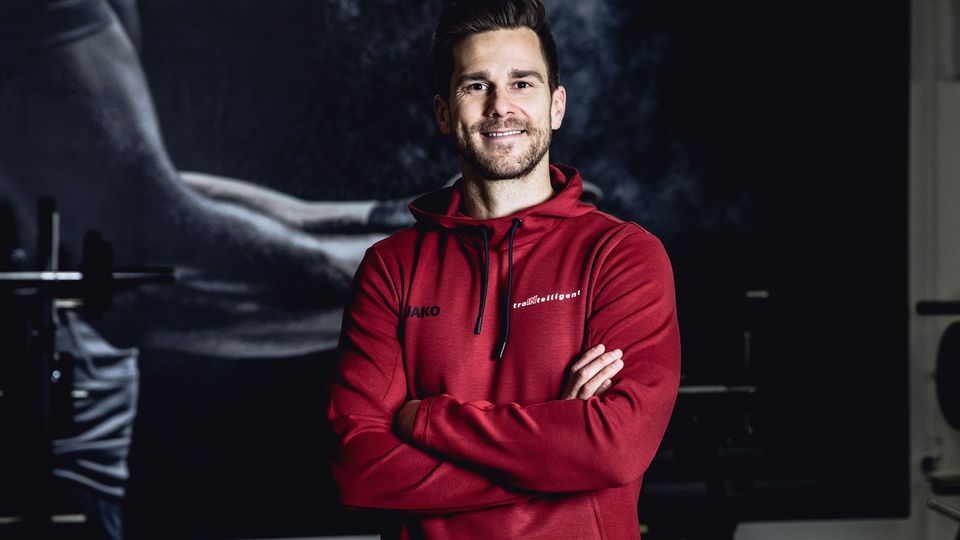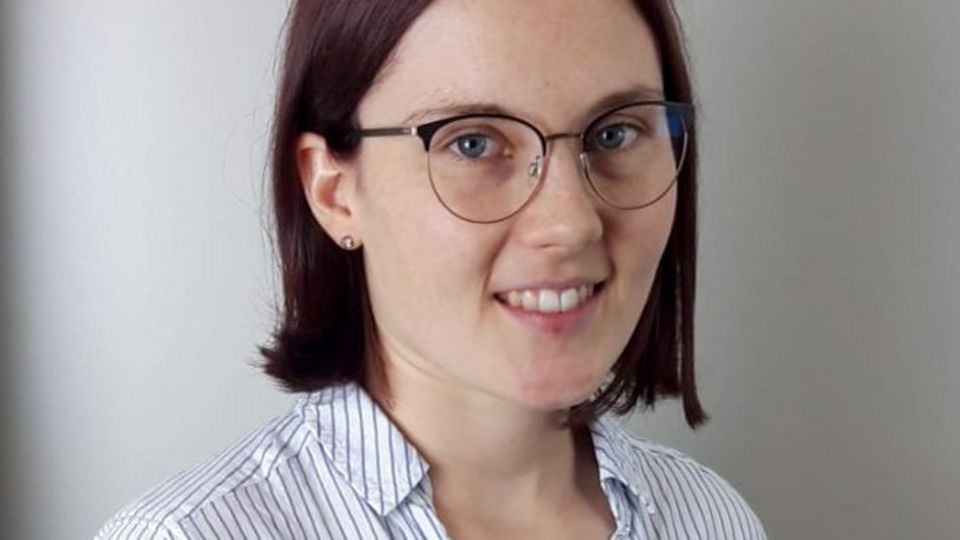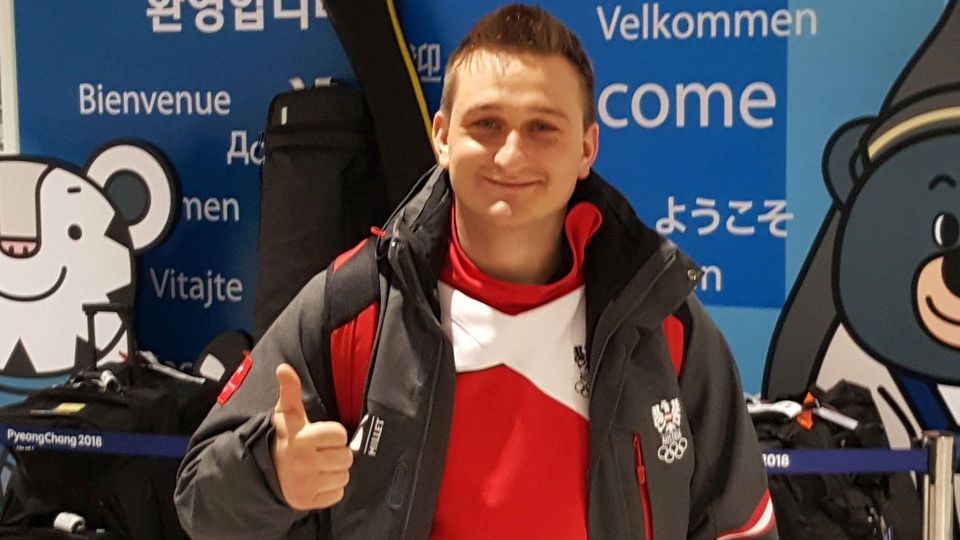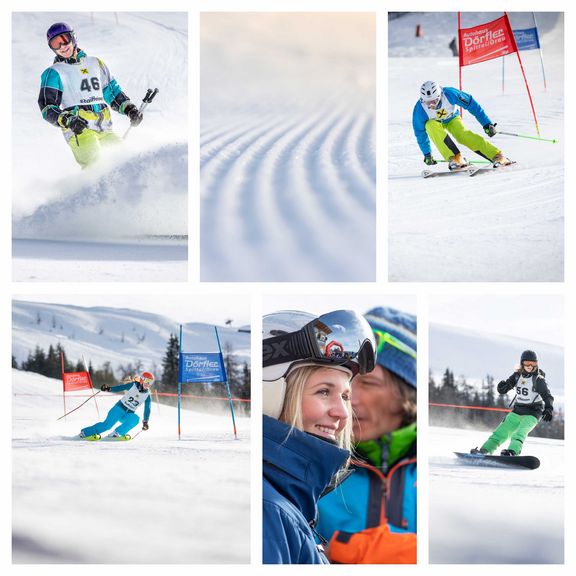Marcel Kuster
Seine ersten Eindrücke von der Arbeit eines Physiotherapeuten bekam Marcel Kuster durch den Sport – genauer gesagt beim Fußball. „Mir gefiel nicht nur…
Mobility and functionality are indispensable for people. Movement restrictions, e.g. due to accidents, illness or as a result of chronic stress at work, can reduce the quality of life enormously. Physiotherapy can do a lot to give people back their freedom of movement and pain.
Working with and on people is the focus of this degree programme, which is characterised by a good supervision situation and teaching in small groups. The teachers use a holistic approach to teach the preservation, promotion, optimisation and regeneration of the physical and mental resilience of patients. The main areas of study are biomedical and physiotherapeutic basics, physiotherapeutic techniques and physiotherapeutic processes in all medical disciplines.
With the Bachelor's degree programme in Physiotherapy, students acquire the theoretical and practical prerequisites for the independent performance of physiotherapy. Graduates possess professional, social-communicative competences and personal competences that are indispensable for working with and on people. Furthermore, the necessary scientific competences are taught, which enable evidence-based professional action.
Professional internships take place from the second semester onwards, in which students are familiarised with a wide range of physiotherapeutic measures at an early stage. In this way, students are optimally prepared for independent physiotherapeutic action

Physiotherapeutische Übungen mit der Langhantel
Winterterm 2025
Period I: 01.11.-15.03.2025
The semester starts in October - we only offer intake in winterterm!
The start of lectures can be found in the individual timetable which is available after enrollment.
Monday bis Friday full-time and partly on Saturdays
Study Guidance
Book your personal appointment right now!
You can find out more about our advisory services, events and fairs on our website.
Language of Instruction: German
Minimum of C1, stated by either
-DAF ("Deutsch als Fremdsprache)
-ÖSD ("Österreichisches Sprachdiplom Deutsch)
-GOETHE Sprachinstitut
Admission requirements:
Please note that foreign educational documents in some cases need to be legalized as well as translated in order to apply. More information can be found in our official application guideline
Die Humanomed Gruppe vergibt Stipendien an FH Studierende der Physiotherapie: https://humanomed.bewerberportal.at/Job/222734
Das Stipendium beinhaltet:

Bei Fragen zum Studium kontaktieren Sie:
Sonja Nagelschmied, BA
Studiengangsadministration
Tamara Stotter, BA
Administration
Dr. Michael Alexander Suppanz, MSc. MAS
Studiengangsleitung Physiotherapie
+43 5 90500 3525
m.suppanz[at]fh-kaernten[dot]at
The physiotherapy degree program is modular in structure and also offers the opportunity to specialize in elective subjects according to personal preferences. With a variety of interdisciplinary project work and professional internships, students are familiarized with the demands of everyday professional life at an early stage. The physiotherapy program uses state-of-the-art diagnostic, therapeutic, and training equipment in courses and hands-on projects. These instruments can be used to conduct screenings on balance & fall risk, posture weaknesses, strength deficits, and much more, as well as medical training therapy.
Physiotherapists have a large number of career opportunities open to them, as they have very good job market prospects due to their studies as experts in movement analysis and therapy. They find attractive jobs in numerous health care institutions such as public and private hospitals, rehabilitation centers, health promotion and preventive health care institutions, senior citizens and nursing homes. For many graduates, working in private practice is a desirable goal.
| Lecture | Type | SPPS | ECTS-Credits | Course number |
|---|---|---|---|---|
| Anatomische Grundlagen 2 | VO | 3,0 | 3,5 | B3.06670.10.030 |
| Anatomische und physiologische Grundlagen 1 | VO | 4,0 | 4,0 | B3.00000.10.010 |
| Betriebliche Gesundheitsförderung und Arbeitsmedizin | ILV | 1,5 | 1,5 | B3.06670.10.150 |
| Bewegungsverhalten und Bewegungsanalyse | ILV | 1,0 | 1,0 | B3.06670.10.060 |
| Gesundheitsförderung und Prävention | ILV | 1,5 | 1,5 | B3.06670.10.160 |
| Gesundheitswissenschaftliche Forschung 1 | ILV | 1,0 | 1,0 | B3.06670.10.050 |
| Grundlagen der Krankenhaushygiene | ILV | 1,0 | 1,0 | B3.00000.10.140 |
| Körperwahrnehmungsübungen und Entspannungstechniken 1 | ILV | 1,0 | 1,0 | B3.06670.10.130 |
| Lymphologische Physiotherapie | ILV | 2,0 | 2,0 | B3.06670.10.120 |
| Massage | ILV | 2,0 | 2,0 | B3.06670.10.110 |
| Medizinische Terminologie | ILV | 2,0 | 2,0 | B3.00000.10.020 |
| Methodik der Gruppentherapie | ILV | 2,0 | 2,0 | B3.06670.10.070 |
| Mobilisation und professionelles Handling | ILV | 1,5 | 1,5 | B3.06670.10.080 |
| Motorisches Lernen | ILV | 1,0 | 1,0 | B3.06670.10.090 |
| Physikalische Therapie | ILV | 2,5 | 2,5 | B3.06670.10.100 |
| Physiologische Grundlagen 2 | VO | 2,0 | 2,5 | B3.06670.10.040 |
| Optional subject | Type | SPPS | ECTS-Credits | Course number |
| Ausbildung zum*r Skilehreranwärter*in | ILV | 0,0 | 0,0 | SX-FA3 |
| Erste Hilfe | UE | 1,0 | 1,0 | B3.00000.70.010 |
| Lecture | Type | SPPS | ECTS-Credits | Course number |
|---|---|---|---|---|
| Angewandte Forschung in der Physiotherapie | ILV | 2,0 | 2,0 | B3.06670.30.410 |
| Berufspraktikum 2 | BPR | 0,0 | 6,5 | B3.06670.30.420 |
| Funktionelle Techniken 2 | ILV | 3,0 | 3,0 | B3.06670.30.390 |
| Labor- und Leistungsdiagnostik für Physiotherapeut*innen | ILV | 1,0 | 1,5 | B3.06670.30.380 |
| Manuelle Therapie | ILV | 3,0 | 3,0 | B3.06670.30.350 |
| Myofasziale Behandlungstechniken | ILV | 1,5 | 1,5 | B3.06670.30.400 |
| Neurologie | VO | 2,0 | 2,0 | B3.06670.30.360 |
| Orthopädie und Traumatologie (Schwerpunkt: Extremitäten) | VO | 2,0 | 2,0 | B3.06670.30.320 |
| Physiotherapie in der Neurologie 1 | ILV | 4,0 | 4,0 | B3.06670.30.370 |
| Physiotherapie in der Orthopädie (Schwerpunkt: Extremitäten) | ILV | 2,0 | 2,0 | B3.06670.30.330 |
| Physiotherapie in der Traumatologie (Schwerpunkt: Extremitäten) | ILV | 2,0 | 2,0 | B3.06670.30.340 |
| Seminar zum Berufspraktikum 2 | SE | 0,5 | 0,5 | B3.06670.30.430 |
| Lecture | Type | SPPS | ECTS-Credits | Course number |
|---|---|---|---|---|
| Angewandte Physiotherapie 2 | SE | 1,0 | 1,5 | B3.06670.50.690 |
| Berufspraktikum 4 | BPR | 0,0 | 11,0 | B3.06670.50.700 |
| Chirurgie | VO | 1,0 | 1,0 | B3.06670.50.650 |
| Entrepreneurship in der Physiotherapie | ILV | 2,0 | 2,0 | B3.06670.50.680 |
| Gynäkologie und Geburtshilfe | VO | 1,5 | 1,5 | B3.06670.50.630 |
| Körperwahrnehmungsübungen und Entspannungstechniken 2 | ILV | 1,0 | 1,0 | B3.06670.50.600 |
| Physiotherapie im Sport | ILV | 1,5 | 1,5 | B3.06670.50.590 |
| Physiotherapie in der Chirurgie | ILV | 1,5 | 1,5 | B3.06670.50.660 |
| Physiotherapie in der Gynäkologie und Geburtshilfe | ILV | 1,5 | 1,5 | B3.06670.50.640 |
| Physiotherapie in der Psychiatrie | ILV | 2,0 | 2,0 | B3.06670.50.620 |
| Physiotherapie in Palliative Care | ILV | 1,5 | 1,5 | B3.06670.50.610 |
| Rechtsgrundlagen | VO | 1,5 | 1,5 | B3.00000.50.670 |
| Schmerzbehandlung und Schmerzmanagement | ILV | 2,0 | 2,0 | B3.06670.50.580 |
| Seminar zum Berufspraktikum 4 | SE | 0,5 | 0,5 | B3.06670.50.711 |
| Lecture | Type | SPPS | ECTS-Credits | Course number |
|---|---|---|---|---|
| Allgemeine Pathologie | VO | 2,0 | 2,0 | B3.00000.20.200 |
| Anatomie in vivo | ILV | 1,5 | 1,5 | B3.06670.20.230 |
| Berufspraktikum 1 | BPR | 0,0 | 5,5 | B3.06670.20.300 |
| Biomechanik | ILV | 1,5 | 1,5 | B3.06670.20.240 |
| Clinical Reasoning in der Physiotherapie | ILV | 2,0 | 2,0 | B3.06670.20.190 |
| Funktionelle Techniken 1 | ILV | 1,5 | 1,5 | B3.06670.20.260 |
| Gesundheitswissenschaftliche Forschung 2 | ILV | 1,0 | 1,5 | B3.06670.20.180 |
| Haltungs- und Ganganalyse | ILV | 1,0 | 1,0 | B3.06670.20.220 |
| Innere Medizin | VO | 2,5 | 2,5 | B3.06670.20.270 |
| Klinische Untersuchung - Muskelfunktionsprüfung und Gelenksmessung | ILV | 2,0 | 2,0 | B3.06670.20.210 |
| Physiotherapie in der Geriatrie | ILV | 2,0 | 2,0 | B3.06670.20.290 |
| Physiotherapie in der Inneren Medizin (inkl. Intensivmedizin und Rheumatologie) | ILV | 3,5 | 3,5 | B3.06670.20.280 |
| Professionelle Gesprächsführung und Interaktion 1 | ILV | 1,5 | 1,5 | B3.06670.20.170 |
| Seminar zum Berufspraktikum 1 | SE | 0,5 | 0,5 | B3.06670.20.310 |
| Trainingslehre | ILV | 1,0 | 1,5 | B3.06670.20.250 |
| Lecture | Type | SPPS | ECTS-Credits | Course number |
|---|---|---|---|---|
| Angewandte Physiotherapie 1 | SE | 1,0 | 1,5 | B3.06670.40.550 |
| Berufspraktikum 3 | BPR | 0,0 | 7,5 | B3.06670.40.560 |
| Differentialdiagnostik und bildgebende Verfahren | ILV | 1,0 | 1,5 | B3.06670.40.510 |
| Gerätegestützte Bewegungsanalyse | ILV | 1,0 | 1,0 | B3.06670.40.520 |
| Orthopädie und Traumatologie (Schwerpunkt: Wirbelsäule) | VO | 1,5 | 2,0 | B3.06670.40.440 |
| Pädiatrie | VO | 1,5 | 1,5 | B3.06670.40.490 |
| Physiotherapie in der Neurologie 2 | ILV | 2,0 | 2,0 | B3.06670.40.480 |
| Physiotherapie in der Orthopädie (Schwerpunkt: Wirbelsäule) | ILV | 3,0 | 3,0 | B3.06670.40.460 |
| Physiotherapie in der Pädiatrie | ILV | 2,0 | 2,0 | B3.06670.40.500 |
| Physiotherapie in der Traumatologie (Schwerpunkt: Wirbelsäule) | ILV | 0,5 | 0,5 | B3. 06670.40.450 |
| Professionelle Gesprächsführung und Interaktion 2 | ILV | 1,0 | 1,5 | B3.06670.40.540 |
| Reflextherapien | ILV | 1,5 | 1,5 | B3.06670.40.470 |
| Seminar zum Berufspraktikum 3 | SE | 0,5 | 0,5 | B3.06670.40.570 |
| Seminar zur Bachelorarbeit 1 | SE | 1,0 | 4,0 | B3.06670.40.530 |
| Lecture | Type | SPPS | ECTS-Credits | Course number |
|---|---|---|---|---|
| Angewandte Physiotherapie 3 | SE | 1,0 | 1,5 | B3.06670.60.790 |
| Bachelorprüfung | BE | 0,0 | 2,0 | B3.06670.60.820 |
| Berufskunde und Ethik | VO | 1,0 | 1,5 | B3.06670.60.770 |
| Berufspraktikum 5 | BPR | 0,0 | 14,0 | B3.06670.60.800 |
| eHealth und Telerehabilitation | ILV | 1,5 | 2,0 | B3.06670.60.760 |
| Gesundheitsversorgung und Public Health | VO | 2,0 | 2,0 | B3.00000.60.780 |
| Seminar zum Berufspraktikum 5 | SE | 0,5 | 0,5 | B3.06670.60.810 |
| Seminar zur Bachelorarbeit 2 | SE | 1,0 | 5,0 | B3.06670.60.750 |
| Wahlpflichtfach: Aktuelle Entwicklungstrends mit Auswirkungen auf die Physiotherapie | ILV | 1,5 | 1,5 | B3.06670.60.740 |
| Wahlpflichtfach: Neurologie | ILV | 1,5 | 1,5 | B3.06670.60.730 |
| Wahlpflichtfach: Orthopädie | ILV | 1,5 | 1,5 | B3.06670.60.720 |
Physiotherapeut*innen haben durch ihre Ausbildung sehr gute Arbeitsmarktchancen in der Prävention, Akut- und Langzeitmedizin und können in vielen Bereichen und Institutionen tätig sein:
Die Absolvent*innen des Studienganges Physiotherapie sind berechtigt, gemäß § 10 Abs. 1, Z 1 des Bundesgesetzes über die Regelung der gehobenen medizinisch-technischen Dienste (MTD-Gesetz), BGBL. Nr. 460 (1992) idgF., die Berufsbezeichnung „Physiotherapeutin“ – „Physiotherapeut“ zu führen.
Masterstudiengänge sind in fachspezifischen Bereichen der Physiotherapie, in den Gesundheitswissenschaften (auch interdisziplinär) und auch anderen Bereichen (je nach entsprechenden Zugangsvoraussetzungen der anbietenden Institutionen) gemäß § 6 FHStG (4) möglich.

Seine ersten Eindrücke von der Arbeit eines Physiotherapeuten bekam Marcel Kuster durch den Sport – genauer gesagt beim Fußball. „Mir gefiel nicht nur…

Von Graz über Finnland und Spanien in die Schweiz – so kann man die bisherige persönliche Landkarte von Tanja Jauk abstecken.

Physiotherapeut, ÖSV Speed Racing Team
Die Lehrenden am Studiengang Physiotherapie suchen ständig nach Möglichkeiten, um ihre Studierenden für das Thema „planetare und menschliche Gesundheit" zu sensibilisieren. Ein Ansatzpunkt ist das Nordic Walking, das im Rahmen einer Lehrveranstaltung theoretisch und praktisch vermittelt wird, um die Studierenden die Natur erleben zu lassen. Durch die Naturreflexion soll die bewusste Wahrnehmung der Umgebung gefördert werden.
In einer Vorlesung zur Physiologie wurde ein Gastvortrag zum Thema „Von Wundheilungsstörungen zu Planetary Health" gehalten, der sich mit den Zusammenhängen der pflanzlichen Ernährung auf die Wundheilungsphasen befasst und die positiven Auswirkungen auf die planetaren Ressourcen aufzeigt.
Es sind weitere Schritte zur Integration der SDGs und Umwelt-Physiotherapie ins Curriculum geplant.

Der Studiengang Physiotherapie der FH Kärnten ist die erste teilnehmende Lehrinstitution aus Österreich, die sich an dieser Agenda beteiligt.
Ein globaler Aufruf zum Handeln: Um sicherzustellen, dass alle Schüler*innen und Studierenden, welche die Ausbildung zum Physiotherapeuten im Jahr 2020 oder später beginnen, von der Beziehung zwischen Umwelt, Gesundheit und Funktionsweise des Menschen und wie diese Teil der Physiotherapie ist innerhalb Ihrer Ausbildung lernen. Angesichts der Tatsache, dass Einstiegsprogramme in aller Welt in der Regel etwa vier Jahre dauern, ist die EPT Agenda 2023 als Vierjahresplan festgelegt worden. Die Hoffnung damit ist, dass dies physiotherapeutischen Bildungseirichtungen genügend Zeit gibt alle Schüler die ihre Ausbildung im Jahr 2020 begonnen haben mit entsprechenden Änderungen zu erreichen.
Jede Schule oder Universität kann frei entscheiden, mit welchen Inhalten sie arbeiten möchte und welche Lehransätze sie verfolgen möchte. In der Agenda werden mehrere Möglichkeiten aufgezeigt, mit der Hoffnung dass dadurch eine Vielfalt von Inhalten und Ansätzen hervorgebracht wird, welche die kulturellen, sozialen und ökologischen Kontexte der verschiedenen Schulen bzw. Institutionen widerspiegelt.
Weitere Informationen zur Environmental Physiotherapy Agenda 2023
Perezoso
Interprofessioneller Behandlungsansatz für Patient*innen mit Arthrose
Physios stärken Gesundheitsberufe
Physiotherapie für Profis der Gesundheit
The Impact of the "Employee Therapy" Model on Hospital Employees
StudyXplore
Neues Angebot aus dem Orientierungsstudienjahr, StudyXplore, an der FH Kärnten: Ausbildung zum/zur Skilehreranwärter*in! ⛷️
Verbinde deine Leidenschaft fürs Skifahren mit einer erstklassigen Ausbildung!
Erlebe praxisnahe Ausbildungstage auf der Gerlitzen Alpe und werde Teil des Teams von Skilehreranwärter*innen der FH Kärnten!
Sichere dir sofortige Jobchancen in den Skischulen und finanziere dein Studium mit deiner Begeisterung fürs Skifahren.
Interesse? Weitere Infos und Anmeldung findest du unter StudyXplore | Skilehreranwärterin | FH Kärnten

"Die Physiotherapie als Arbeit mit und am Menschen war die optimale Verbindung all meiner Interessen. Man kann an den PatientInnen Fortschritte sehen und gemeinsame Ziele erreichen. Auch die Vielseitigkeit und die unzähligen Weiterbildungsmöglichkeiten haben mich fasziniert."
Isabel Kramer
Absolventin
FH-Prof. Dr.
Michael Alexander Suppanz, MSc. MASMag. (FH)
Mario BokalicFH-Prof.in
Angelika Mitterbacher, MSc. MEdDI
Verena Komposch, BA MADipl.-Ing.
Daniela Krainer, BScMag. Dr.
Florian BenischkeDr. med.
Alexander GlasDr. med. univ.
Petra HollmannDr. med. univ.
Franz KelzIng. Dr. med. univ.
Goran MitrovicDr. med. univ.
Arno PramsohlerDr. med.
Markus RinaldiDr.in phil.
Heidemarie SamonigDr.
Wim SaxDr.in
Christa Barbara WALTER, MASThe capital of Carinthia has numerous events and sights all year round. Whether the World Bodypainting Festival, Ironman Austria, major concerts in the Wörthersee Stadium, open air cinema in the Burghof or the magical Christmas market during Advent - there is always something going on here.
The campus in St. Veiterstraße in Klagenfurt is characterised by short distances. The FH building is located in the immediate vicinity of the city centre and is directly on the grounds of the clinic. In addition, green spaces make it possible to spend time at the university in a pleasant atmosphere.
Explore Campus Klagenfurt–St. Veiter Straße and the Ärztehaus on a 360° Tour.
Coming from Villach or Wolfsberg: Take the A 2 South Motorway, bypass Klagenfurt Nord and take the exit Klagenfurt Nord/ Feldkirchen. Drive south on the Feldkirchner-Straße - towards the city. Follow the road until you reach St. Veiter Ring and turn left. Turn left at the St. Veiter Straße intersection and after approx. 600 m select the entrance to the Landeskrankenhaus site on the left-hand side. Our university building is on the left side.
Coming from St. Veit: Take the S37 directly onto St. Veiter Straße. Follow the road until you reach the entrance to the grounds of the Landeskrankenhaus on the right-hand side. Our university building is on the left-hand side.
Coming from Klagenfurt main station: When you leave the station building, turn left towards the bus station. Lines 40 and 41 of the Klagenfurt public utility company will take you to our building. Distance: about 2,5 km. Walking time: approx. 25 minutes.
Coming from the bus station -Heiligengeistplatz: The bus lines 40 and 41 of the Klagenfurt public utility company will bring you to our building. Distance: about 1,2 km.
Coming from the bus station - Heiligengeistplatz: Walk east on Wiesbadener-Str. towards Neuer Platz and keep right. Turn left into Kramergasse, cross Alter Platz and continue along Wiener Gasse to Heuplatz. Cross the Heuplatz and continue on the St. Veiter Straße. After about 600 m you will find the entrance to the grounds of the Klagenfurt Regional Hospital on the left-hand side. Our building is located on the left side of the street. Walking time: approx. 15 min.
Our building is number 24 on the site plan of the Klagenfurt Regional Hospital.
St. Veiter Straße 47
9020 Klagenfurt, Austria
+43 5 90500 3501
gesundheit-und-soziales[at]fh-kaernten[dot]at
Explore Campus Klagenfurt–St. Veiter Straße on a 360° Tour.
In order to be admitted into a bachelor degree program at the Carinthia University of Applied Sciences at least one of the following criteria must be fulfilled:
Moreover, there are degree program specific additional prerequisites as well as more comprehensive information regarding admissions on the individual web pages of the corresponding degree program. The German University of Applied Sciences (Fachhochschule) entrance qualification certificate is only valid as an admission prerequisite for an Austrian UAS/FH bachelor degree program when combined with an applicable vocational certificate.
Persons in their last year of school may apply for a study place in a bachelor degree program before taking their secondary school-leaving exams by submitting their most current secondary school grade/marks report. The secondary school-leaving certificate must be submitted during the registration process at the beginning of the semester.
In order to be admitted into a master degree program at the Carinthia University of Applied Sciences at least one of the following criteria must be fulfilled:
Persons in their last semester of their bachelor degree programs may apply for a study place in a master degree program by submitting their most current transcript of records. The completion of the bachelor degree program certificates must be submitted during the registration process at the beginning of the semester.
####ContentToReplace####
Before enrolment in a degree program at the Carinthia University of Applied Sciences, a learning agreement is concluded between the prospective student and the Carinthia University of Applied Sciences.
This contract defines the rights and obligations of the student and the Carinthia University of Applied Sciences.
The rights and obligations of the student at a glance:
The learning agreement is sent electronically to applicants who have been accepted onto a degree program. In addition to the electronic consent to the learning agreement, the timely payment of the tuition fee and the Austrian Students´ Union fee is a prerequisite for admission to the degree program.
Significant legislative basis for a UAS degree program in Austria can be found here:
FHG - Federal Act on University of Applied Sciences Degree Programs (in German only)
HS-QSG - Act on Quality Assurance in Higher Education
Regarding the accreditation of previously gained academic knowledge through courses and/or exams taken at other institutions of higher education, the respective degree program administration/director will use the principle of ‘course per course relevant accreditation.
The equivalency of the previously taken courses in terms of content and scope to the offered courses in the degree program will be determined by the degree program administrator/director. If an equivalency is determined to exist, then those courses passed with positive marks/grades will be recognized and accredited. Additional examination of academic knowledge in these cases is not foreseen.
Specialized knowledge and relevant experiences acquired through professional and on-the-job experience may also be considered for accreditation for relevant courses. In cases of accrediting professional experience for course credits, additional examinations may be carried out if applicable.
Applications for accreditation are to be submitted directly to the Program Director no later than the start date of the relevant study course(s).
The student must decide where s/he will spend the semester abroad (i.e., a partner university) and will need to coordinate with the responsible Departmental International Coordinator concerning the necessary requirements.
Before the student spends the semester abroad, s/he is required to submit a completed Learning Agreement. This document contains all the courses the student will take abroad and will be recognized at CUAS once s/he finishes the courses successfully. The courses should correspond as much as possible to the courses offered in the curriculum of the student’s CUAS study program in the relevant semester in content and semester hours. It is highly recommended to students to take 30 ECTS credits abroad.
The Learning Agreement is signed and approved by the individual student, the host institution and the program director of the study degree program or a designated faculty member at CUAS.
The Learning Agreement is a declaration of the courses which are to be taken abroad and is not valid as an official recognition document by Austrian law. Therefore, the document is to be linked to the official document “Antrag auf Anerkennung / Application for Accreditation” for academic studies abroad.
During the first four weeks of the study abroad semester the student is allowed to change the Learning Agreement. For example, previously selected courses do not take place or overlap. The host institution and CUAS must agree upon the courses to be changed. If this is approved, the changes must be listed separately on the Learning Agreement (section “Changes to the original Learning Agreement). Afterwards the document is signed and approved by the individual students, the host institution and the program director of the study degree program or a designated faculty member at CUAS.
After the semester abroad the courses taken abroad will be recognized at CUAS. Therefore, the original Transcript of Records from the host institution and the legally valid document “Antrag auf Anerkennung / Application of Accreditation” (which is linked to the Learning Agreement) are obligatory. The student lists on the document the successfully finished courses abroad. After the recognition process is positively completed, the CUAS Transcript of Records will contain those courses.
In cases where the semester abroad is not completed successfully, the Departmental Coordinator and program director of the relevant study degree program will determine on an individual basis if and what courses will be accredited and what a student can do to make up those missing credits which were not accredited.
Detailed information about a semester abroad
For further questions please contact the International Relations Office.
Degree programs at University of Applied Sciences fundamentally only offer a limited number of study places.
In the framework of the application process each applicant will carry out an interview which will influence the allocation of the study places. Additionally, specific degree study programs may require written application tests as well as content-specific/technical aptitude tests. Detailed information regarding the degree program specific application requirements are provided on the degree programs’ web pages.
Repetitive applications for a study place at the same study degree program (e.g., in the following year) is generally allowed; however, the entire application process will start anew and candidates must resubmit all documents and carry out all steps again.
Carinthia University of Applied Sciences reserves the right to levy a surety of EUR 363.36 from the applicant in case of doubt on the authenticity or correctness as regards content of the documents proving the fulfillment of the admission requirements or in case that the documents are not sufficient for a decision on the fulfillment of the admission requirements in accordance with § 4 para. 5a FHG. This surety will be reimbursed to the applicant if the review has proved the authenticity and the correctness of the documents and the fulfillment of the admission requirements.
####ContentToReplace####
Detailed information about application deadlines can be found at the websites of the respective degree programs!
Carinthia University of Applied Sciences accepts both exchange students from partner institutions and so-called ‘Free Mover’ students. The decision to accept Free Movers is made on an individual basis by the relevant Degree Program Director. In the first case an official nomination (via e-mail) from the partner institution is necessary. After the nomination the student will be provided information regarding the application procedure.
Free Movers may apply directly.
Detailed information and deadlines
In order to register as a student at CUAS, each student must fulfill the following:
The enrollment periods for each degree program will be announced in advance to all applicants.
The examination regulations are an integral part of the education contract between the student and Carinthia University of Applied Sciences. It is also available to students and lecturers on the intranet.
Exams are graded according to the FHG [Federal Act on University of Applied Sciences Degree Programs]) § 17 (1), in the Austrian Grading System:
Austrian grading scheme | Definition |
1 | EXCELLENT: |
2 | GOOD: |
3 | SATISFACTORY: |
4 | SUFFICIENT: |
Successfully completed | Positive Leistung, wo eine genaue Differenzierung nicht tunlich ist. |
5 | UNSATISFACTORY: |
Not completed | Negative performance, where a strict differentiation is not adequate |
Recognised | Transfer credits for courses with equivalent learning outcomes |
The final bachelor's and master's examinations before a committee are graded according to FHG (Federal Act on University of Applied Sciences Degree Programs) § 17 (2) in the following grading scale:
In applying this grading system, it has to be noted that the grades “Pass with merit” and “Pass with distinction” are reserved exclusively for an examination performance clearly exceeding the level of performance required to pass these final exams.
Please note: This part of the Website is only available in German.
Die Nostrifizierung ist die Anerkennung eines ausländischen Studienabschlusses (Ausbildung im tertiären Bereich/an Hochschule/Universität) als gleichwertig mit dem Abschluss des inländischen Bachelor- bzw. Masterstudiums an der FH Kärnten. Die Nostrifizierung an der FH Kärnten kann nur erfolgen, wenn ein mit dem ausländischen Studienabschluss gleichwertiger Studiengang an der FH Kärnten eingerichtet ist und sofern die Nostrifizierung zwingend für die Berufsausübung in Österreich notwendig ist (z.B. reglementierter Beruf). Ein nostrifizierter akademischer Grad entfaltet dieselben Rechtswirkungen wie ein im Inland erworbener akademischer Grad.
Innerhalb der Europäischen Union (EU) bzw. des Europäischen Wirtschaftsraumes (EWR) ist eine Nostrifizierung nicht zwingend erforderlich und daher auch nicht möglich. Die Anerkennungsentscheidung von europäischen Ausbildungen in einem reglementierten Beruf (z.B. im Bereich der medizinisch-technischen Dienste, Hebammen und Gesundheits- und Krankenpflege) erfolgt in Österreich durch die zuständige Behörde (das für Gesundheit zuständige Ministerium bzw. Landesregierungen).
Auszug aus: nostrifizierung.at
Nostrifizierungsansuchen können nur für Studienabschlüsse eingebracht werden, welche mit dem Studienangebot der FachhochschuleKärnten übereinstimmen.
Die Nostrifizierung ist ein Verwaltungsverfahren an einer Universität bzw. Fachhochschule, die an bestimmte Voraussetzungen gebunden ist.
Der/Die Antragsteller/in muss nachweisen, dass die Nostrifizierung für seine/ihre angestrebte Tätigkeit in Österreich eine zwingende (siehe: „Was ist vorzulegen?“) Voraussetzung ist. In allen anderen Fällen obliegt die Bewertung des ausländischen Studiums ohnehin dem/der Arbeit- oder Dienstgeber/in.
Die Nostrifizierung kann an jeder Universität bzw. Fachhochschule, an der ein vergleichbares österreichisches Studium eingerichtet ist, beantragt werden. In vielen Fällen kommen daher mehrere Universitäten bzw. Fachhochschulen in Betracht. An welcher davon der/die Antragsteller/in in einem solchen Fall das Verfahren beantragt, bleibt seiner/ihrer Wahl überlassen. Der gleiche Nostrifizierungsantrag kann jedoch nur an einer Hochschule eingebracht werden.
Siehe: Notwendige Anlagen zum Antrag auf Nostrifizierung
Die Nostrifizierungstaxe beträgt derzeit EUR 150,00 und ist im Voraus zu entrichten. Dazu kommen Gebühren und Verwaltungsabgaben. Mehr Informationen unter Anlagen zur Nostrifizierung.
Kriterien der Überprüfung sind Inhalte, Umfang und Anforderungen desjenigen österreichischen Studiums, mit dessen Abschluss die Gleichwertigkeit beantragt wird. Wenn einzelne Voraussetzungen nicht zutreffen, können diese als außerordentliche/r Studierende/r absolviert werden. Sämtliche Bedingungen werden mit Bescheid vorgeschrieben. Wenn der/die Antragsteller/in alle zusätzlichen Bedingungen erfüllt hat oder wenn keine Bedingungen vorgeschrieben wurden, stellt die zuständige Stelle die Nostrifizierung fest.
..., weil die Unterschiede zum österreichischen Studium zu groß sind, kann um Zulassung zum österreichischen Studium angesucht und nach erfolgter Zulassung die Anerkennung von Prüfungen aus dem ausländischen Studium, soweit sie den österreichischen gleichwertig sind, erfolgen. Danach kann das österreichische Studium fortgesetzt und abgeschlossen werden.
Auszug aus: Wie-Verläuft-eine-Nostrifizierung
The European Credit Transfer and Accumulation System (ECTS) is a student-oriented system to accumulate and transfer different study credits.
The ECTS is one of the main characteristics of the Bologna Process and is used within the European tertiary system to allow universities and other institutes of higher education to recognize and accredit students’ previous post-secondary coursework. Moreover, this allows students to accumulate credits from different institutions as well ensure that their tertiary degrees are recognized internationally. Thus, the ECTS-system regulates not only student mobility within Europe but also the admission to institutes for further studies.
The system is based upon the transparency of defined learning outcomes and learning processes. The acquisition of experience and knowledge is made transparent through the defined learning outcomes in the course description, the corresponding curriculum module and the degree program’s entire curriculum; this significantly contributes to quality assurance.
ETCS credits are calculated based upon a student’s workload, which in normal cases is necessary to pass a course successfully.
The learning outcomes describe what students should know, understand and be able to do after the successful completion of a learning process. The work load defines the amount of time typically necessary for all learning activities (e.g., lectures, seminars, projects, lab exercises, self-study, exams) in order to achieve the expected learning outcomes.
Within the European tertiary system, a semester is assessed to have 30 ECTS credits and an academic year 60 ECTS credits. The workload for an academic year ranges between 1.500 and 1.800 hours. In Austria, one ECTS credit is equivalent to a workload of 25 real hours.
The Learning Agreement (an agreement to accredit courses completed in a semester abroad) encompasses a listing of all the courses/modules/learning units that a student is to attend and complete at the partner university during the semester abroad. The courses’ ID-numbers and the ECTS credits to be transferred are listed in this document as well. When a ECTS credit transfer is to take place, then the learning agreement must be signed and approved by all three parties involved before the semester abroad: the student, the host institution and the sending institution. It is possible to make amendments to the learning agreement four weeks after the begin of the semester abroad.
The document Confirmation of Stay (Aufenthaltsbestätigung) confirms the actual stay of students at the host institution and is normally issued by the International Relations Office. The document may be issued by the host institute’s International Relations Office at the earliest two weeks before students abroad depart back to their home countries. This document is mandatory for Erasmus+ students.
The Transcript of Records (Datenabschrift) provides an overview of all study courses (completed courses/modules, grades/marks and the number of achieved ETCS credits). The ToR provides a proof of courses successfully completed and thus is very useful for student mobility (before the semester abroad, the ToR can be provided to the host institution and after the semester abroad, it provides the foundation for the recognition/accreditation of courses completed abroad at the sending institution).
The Diploma Supplement (Diplomzusatz) contains a standardized description of a completed degree program. The diploma supplement aims to improve the overall international transparency of degrees as well as to serve as a document for the recognition of academic and professional qualifications.
Infos unter www.fh-kaernten.at
For payments within the additional period, the tuition fee increases by 10%. Registration is only possible after receipt of payment at the account of CUAS!
*Please note the individual start of the courses! The exact dates can be found on the website of the respective degree programme, or contact the responsible administration for more information
**Please refer to the websites of the respective degree programs to find out which application periods are open.
*** Deviations and changes concerning the lecture-free periods are possible! Please inform yourself
about your study programme with your administration.